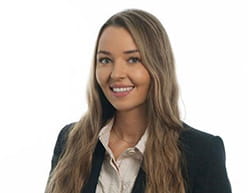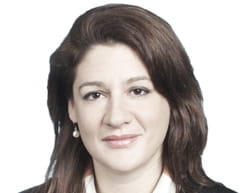Legal Considerations
As AI continues to revolutionise our ways of working and innovating, the intricate relationship between AI and intellectual property (IP) has been at the forefront of debate. Interestingly however, despite the ongoing debates, there is little, if any legislative guidance around the interaction of IP and AI. The UK has yet to implement any AI legislation, so where do we stand with AI and IP? Two key issues at the forefront of the debate are: i) the use of IP protected material in the training of AI, and ii) who owns the IP in the output of AI creations.
Use of IP protected material in AI – the conundrum
AI tools such as ChatGPT, are large language models (LLMs), which are built by “training” on trillions of words through written works. AI companies have been hit with a series of legal actions from IP owners. Open AI is currently being sued by the New York Times, the root of whose complaint is that the dataset used to train ChatGPT contains a “mass of Times copyrighted content" and is therefore a copyright infringement. Open AI simultaneously faces a similar action from numerous authors in California, for the same reason[1] and most recently, in the first UK case against OpenAI by parenting website, Mumsnet. To this point in the UK, many eyes have been on the proceedings between Getty Images and Stability AI[2]. Getty accuses Stability AI of scraping more than 12 million images from Getty's library of stock images and using them to train its AI tool. When the tool then creates images from users' prompts, the images created, as argued by Getty, are reproductions of Getty's images and thus, a copyright infringement. The High Court recently rejected Stability AI's application to strike out Getty's claim, and the trial is expected to take place in 2025.
The crux of the matter is therefore: is the use of copyright protected material in AI tools an infringement of the owner's IP in such materials? A definitive answer to this question is yet to be given but it will be interesting to watch the case law emerge on this point. In reality, it may be that the answer is very fact specific, but we will continue to follow the decisions for guidance on this topic.
In terms of available defences to such copyright infringement and the UK legislative framework, current UK copyright legislation has an exception for 'research for non-commercial purpose' which permits 'text and data mining' (TDM), but non-commercial purposes clearly would not extend to training the likes of ChatGPT. The UK government recently U-turned on a decision which would have opened up this exception to also allow commercial scientific research outcomes and allow TDM of databases, in line with the EU[3]. This would have allowed TDM "for any purpose" and the Government (rather optimistically) claimed the wider exception would "ensure the UK’s copyright laws are among the most innovation-friendly in the world". Therefore, the current UK legislative position is that: AI companies cannot copy third party owned copyright material to train their AI models save for non-commercial purposes (which is likely to be virtually never). Similarly, creators and owners of copyright works have limited ability to police or monitor the use of their works by such AI companies - thus, no party is truly satisfied.
An interesting solution to this issue is for the two parties to enter into a licensing agreement to permit the AI company to use the copyright materials on the terms agreed by the owner of the materials. This played out recently in a licencing agreement between Google and Reddit earlier this year. In essence, this agreement, worth a reported $60m per year, gives Google full access to Reddit's content for the purpose of training Google's AI models. Such agreements highlight how AI companies and content creators can navigate the IP challenges and avoid expensive litigation by fronting up the issue early on. This may well be something we see more of in the future.
Outside of this, the UK Intellectual Property Office (IPO) has also consulted with industry executives from the AI space and creatives, in the hope of establishing a code of conduct for AI and copyright material. AI companies want easy access to vast troves of content to train their models, while creative industry companies (in print and music) are concerned that they will not be fairly compensated for its use. Unfortunately, the outcome of the consultation was that an agreement could not be reached, and those talks broke down, shelving the code. The response to the consultation concludes that there will now be a period of engagement between stakeholders which allows creators and AI developers to effectively work together in partnership with further "proposals" soon to be set out. This perhaps suggests that amendments to legislation may be back on the agenda, but in the interim, we will need to wait for outcomes in decisions such as Getty's litigation against Stability AI and Mumsnet against Open AI, to help shape the rules and policies on AI and copyright.
A potential solution?
Whilst not directly affecting UK businesses (unless they deploy or develop an AI system used in the EU), the recent publication of the EU AI Act (the Act) does represent a step forward in the protection of IP rights in the rapidly evolving world of AI, particularly generative AI. This groundbreaking piece of AI legislation places obligations on general-purpose model providers to establish policies to comply with EU copyright law, regardless of where in the world the model is trained. The EU's TDM copyright exception (discussed above) permits copyright owners to opt out of the TDM exception and, under this Act, providers must identify and comply with these opt-outs and adhere to disclosure requirements, obligating them to publicly disclose details of content used to train their models and therefore the source of their content.
The Act comes into force on 2 August 2024 and provides a layer of protection for the owners of copyright and trade secrets. However, with the UK taking a narrower approach to TDM and a much lighter approach to AI regulation, it remains to be seen whether we can expect to see these regulations extended to the UK. That being said, any UK-based AI providers will need to adhere to the Act insofar as they deploy or develop an AI system used in the EU.
Who owns the IP in the work generated by AI?
Another consideration is whether any IP protection can be given to work that is created by generative AI produced by the AI tools. For example, what happens if a generative AI model conjures up an invention? Who owns it? The AI company? Or, the client of that company, if such invention was created during their usage? What if the invention has come about because the AI was trained using works belonging to third parties? These are all questions that need answering.
When it comes to "inventions" we are in the realms of patent law. Under the Patents Act 1977, an 'inventor' is defined as 'the actual devisor of the invention' and, under the patent application process, the application must name the inventor(s). In a recent landmark decision, the UK Supreme Court had to consider whether the named inventor could be a non-human. Dr Thaler, a computer scientist, created an AI model called DABUS, which is capable of autonomously generating new inventions across various fields, without direct human intervention. DABUS created two inventions which Thaler attempted to patent, citing DABUS as the 'inventor'. The applications were refused on the basis that the inventor named on the patent application must be a human being. Thaler appealed all the way to the Supreme Court, who upheld the decision, holding that "an inventor within the meaning of the 1977 Act must be a natural person[4]". The decision does not answer the key question, however, as to whether an invention created by AI is in principle patentable and, if so, who has the right to the patent. On this fundamental issue, the Supreme Court commented inconclusively that, had Thaler presented himself as the inventor, with DABUS being a highly specialised tool, "the outcome of these proceedings might well have been different." Therefore, the scope of IP protection afforded to works created by such AI tools is just as unclear as the position on the use of IP protected materials in such AI tools (above). However, on the former, the Supreme Court does seem to leave open the door that inventions produced by such AI tools in the future may be afforded patent protection (subject to human inventors being recorded on the patent application and not the AI tool itself).
Are there any (IP focused) benefits to AI?
AI has brought some benefits to the IP sector, and this is through the use of AI algorithms to tackle IP infringements. AI algorithms can scour the internet, analysing data, texts, images, and patterns across various online platforms, flagging unauthorised use of trade marked or copyright works and counterfeit goods. This is likely to identify and provide helpful evidence of IP infringements in a quick and efficient manner. Similarly, other AI programmes such as 'Relativity Patents' harness the power of AI to perform prior art searches, delivering search results quicker and easier than ever before. We will likely see more utilisation of these tools to assist with IP infringement and clearance searching of IP rights.
Practical Considerations
So where does that leave us? Whilst we appear to be in a state of flux on the position on AI and IP longer term, there are some key takeaways:
- Businesses with IP rights should develop a comprehensive IP strategy which addresses the challenges and opportunities provided by AI, strategies for enforcing IP rights in the AI world and dealing with litigation and setting internal policies regarding how they wish AI and IP to interact within the business and giving clear guidance to their employees.
- Any organisations in the business of building AI models should be wary as to the content they are using to train those models, acquiring the correct permissions and licences where appropriate, to avoid litigation down the line.
- Organisations should ensure that any agreements between themselves and AI vendors include indemnities from any IP litigation that may potentially arise in relation to the use of those AI models and are clear who will own the IP in any outputs created using the models.
- If your business has IP rights to protect or requires evidence in respect of an alleged IP infringement, consider the use of AI in assisting with this.
Summary
As AI continues to play an increasingly central role in technological innovation, as well as artistic creation, a burning question remains unanswered – how will the balance be struck between the protection of creators' works and fostering the development of AI works? The position in the UK is largely up in the air, with no specific legislation (or policies) and an abandoned code of conduct. The UK government has refrained from promising any AI regulation any time soon, so for now, the UK's legal landscape in relation to AI and IP will be shaped by the courts in legal battles such as that of Getty.


